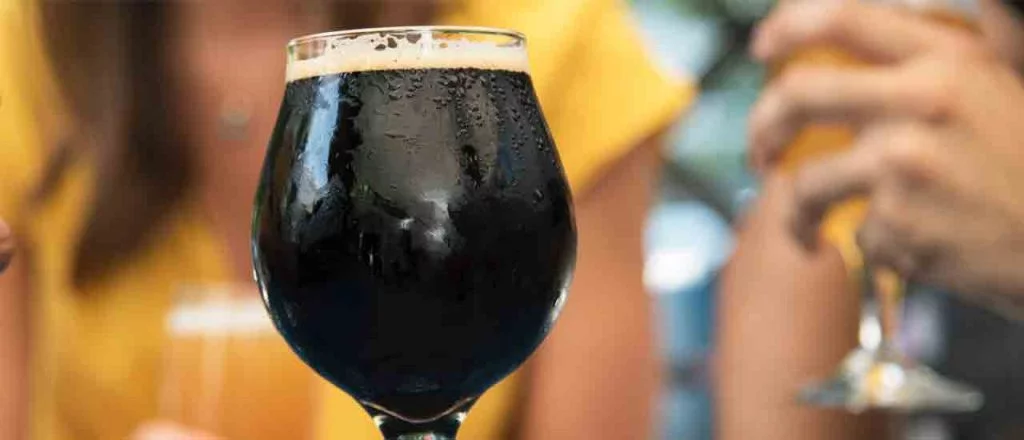Barley, History & Rise To Popularity
Barley is the foundation of beer: it’s what contains starches that are converted into sugars, that are then fermented into alcohol. But just as important, it’s what gives the colour and a lot of the flavour in beer- achieved through the malting process. Done at special malt houses, malting is where the grains are germinated and then cooked until a desired roast can be achieved. Like coffee, the depth and intensity of malted barley can range from pale to black, and it’s here where we start to talk about different styles.
Crisp, golden lagers began to dominate the beer drinking world in the late 1800s but before then, almost all beer was much darker. Modern malting technology was invented in England in the early 1800s and it wasn’t until this time that brewers could brew lighter style beers. This technology also allowed them to develop darker malts to be more consistent. Around this same time in England, the style we think of as Porter had become the everyday ale. When new malting techniques allowed darker malts to be used in the brewing of Porters – enter, Stout Porter. Darker, stronger, and more flavourful than Porter; the Stout Porter gained popularity as a more robust alternative – and, also, was quickly shortened to Stout. Aromas and flavours typically found in stouts vary, but there is always a toasty malt-tone like espresso, black chocolate, charred bread, and, sometimes, molasses. Stouts are fermented at warm temperatures with Ale yeasts. During that warm fermentation, Ale yeast likes to produce the fruity notes we call “esters” and in darker beers they’ll usually be found as flavours of raisins, prunes, dark plums, and dried fruits.
Russian Influence
Like the golden beer explosion that followed in the early 1900s, more consistent dark beer technology also reached Ireland- where a popular Stout brewery was just getting things going. One of the more interesting stout stories comes from Peter the Great of Russia, who loved England’s stout so much, he started placing standing orders for these beers. However, something had to be done to prevent spoilage on the long, cold journey to Russia as beer wasn’t nearly as stable as it is today. So brewers decided to increase bitterness and alcohol to “fortify” the products. Upon arrival, the beer had mellowed in its cask and the resulting strong beer was the beginning of what we now know as Russian Imperial Stout.
One of the best modern brewers of Imperial Stout in the world right now is Brouwerij de Molen in the Netherlands. Since 2004 they have been producing award winning stouts, strong ales, saisons, and IPA’s. We have three Imperial stouts, and one Belgian Quad style coming from them this week! Locally, Spindrift Brewing has started their “Out Of The Hold Series” where new oak aged/oak fermented beers are released every month, and for the winter/spring they’re focusing on darker styles. Last month we brought in a small order of “Neat” their French Oak-Aged Imperial Stout – the staff and customers were blown away, this is certainly a series to look out for.
Add More Things!
Naturally, other sub-styles of stout started popping up around England. You might be familiar with Oatmeal Stout, for one. Becoming popular in the 19th century, these beers have a small portion of oats added to the mash to give a more dense, creamy mouthfeel. A notable local take on this is the Cereal Killer Oatmeal Stout from Big Spruce Brewing in Cape Breton, one of our most popular beers. Also, be sure to try out the Lowlander Oatmeal Stout from our friends at New Scotland Brewing in downtown Dartmouth.
When the American craft revolution started some 100 years later, a lot of U.S. brewers looked to England for style inspiration, and given the American propensity to lean into bigger flavours, it only made sense to start brewing English stouts. The biggest difference difference between the two is in the hops. Hops are delicate and do not transport well (especially in the 1980s before modern hop processing took place) so American home and craft brewers started buying American hops, grown on the West Coast. These hops are much more assertive, in aromas, flavours, and also in bitterness. So, adding them to English stout made for a much more intense and bitter experience. This was the beginning of the American Stout. As with every American beer style, hops are king. From there, it wasn’t long before American brewers were adding chocolate to make Chocolate Stouts and even Lactose sugars to make Milk Stout. Now, it’s all gone full circle as British craft brewers are using American styles as inspiration for new ideas, and the style circle keeps going!
The Cool Cousins
Lastly, if you enjoy the deeply-roasted flavours of Porter and Stout, be sure to check out their German cousins! Dunkel and Doppelbock have a lot of the same incredible roasted malt flavours of nutty brown bread, molasses, chocolate, and toasted bread crusts – only instead of being fermented at the warmer temperatures of an Ale, they’re fermented cold for a long time to develop a very smooth and refined mouthfeel. Truly, some of the most beautiful expressions of darker malts can be found in these dark German lagers. We’re very lucky to have both a Dunkel and Doppelbock from Klosterbrauerei Weissenohe in Bavaria, Germany. In my 6 years in the beer industry, these remain two of my favourite dark beers that I’ve ever tasted.
Cheers,
Lucas

